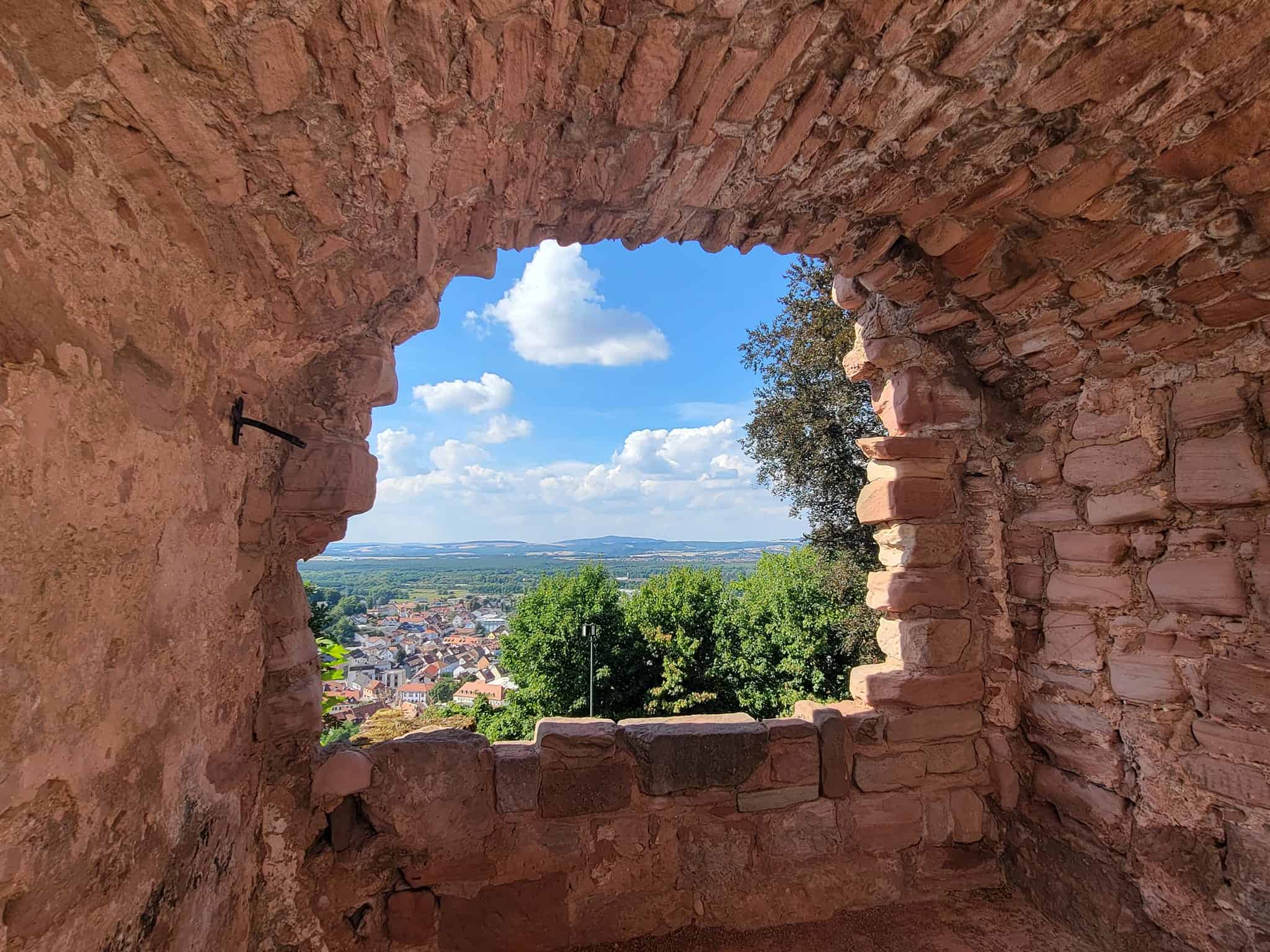While my husband was waiting for me to get an emergency filling replacement, he discovered that there is a charming and historic castle in Landstuhl, about a 5 minute drive from the dentist’s office. Because of course there is! Germany has about 20,000 castles in the southwest of the country, so you’re never more than a cannon ball’s shot away. In this case, it’s charming Nanstein Castle (Burg Nanstein), which has everything you need – views, stories, history, and a biergarten!
After the filling and before the novacaine wore off, we drove up a snakey one-lane road through the deep green Palatinate forest. Nanstein Castle did not disappoint!
Fascinating and Bloody History
Construction of the impressive red sandstone structure began in the 1100s. But the castle had its most notable period during the early 1500s and its eventful occupation by Franz von Sickingen, “the last chevalier.” Sickingen seemed to have amassed his fortune and land by providing mercenary armies to underdogs in local skirmishes. He often targeted the Catholic church and its hierarchy.
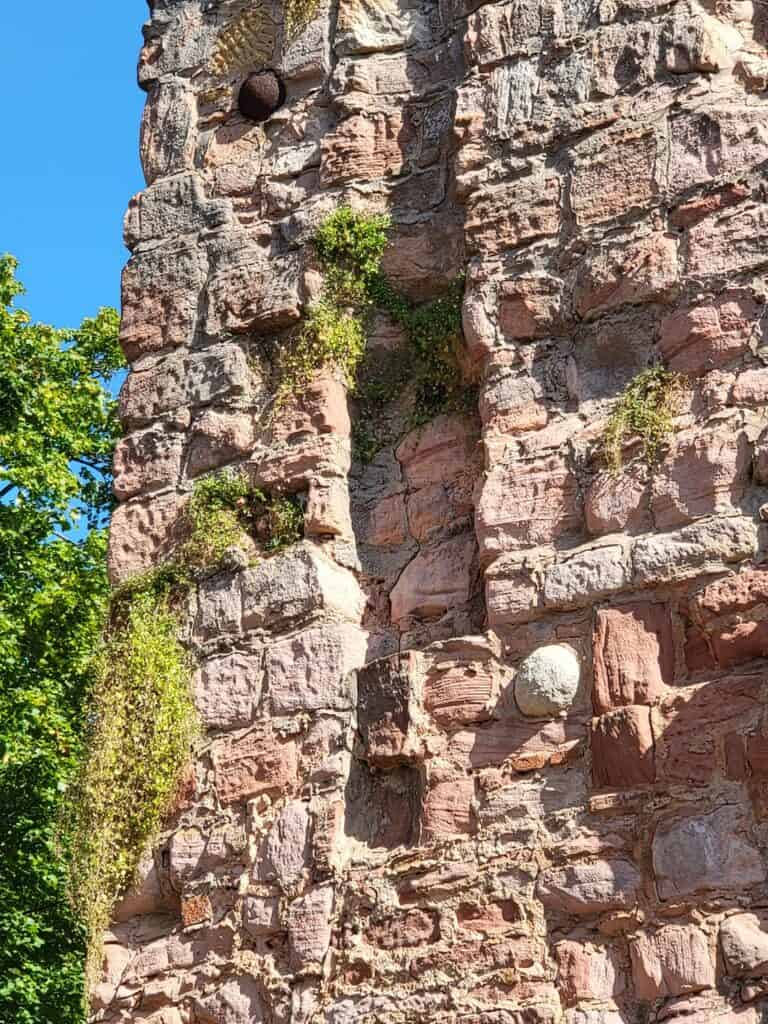
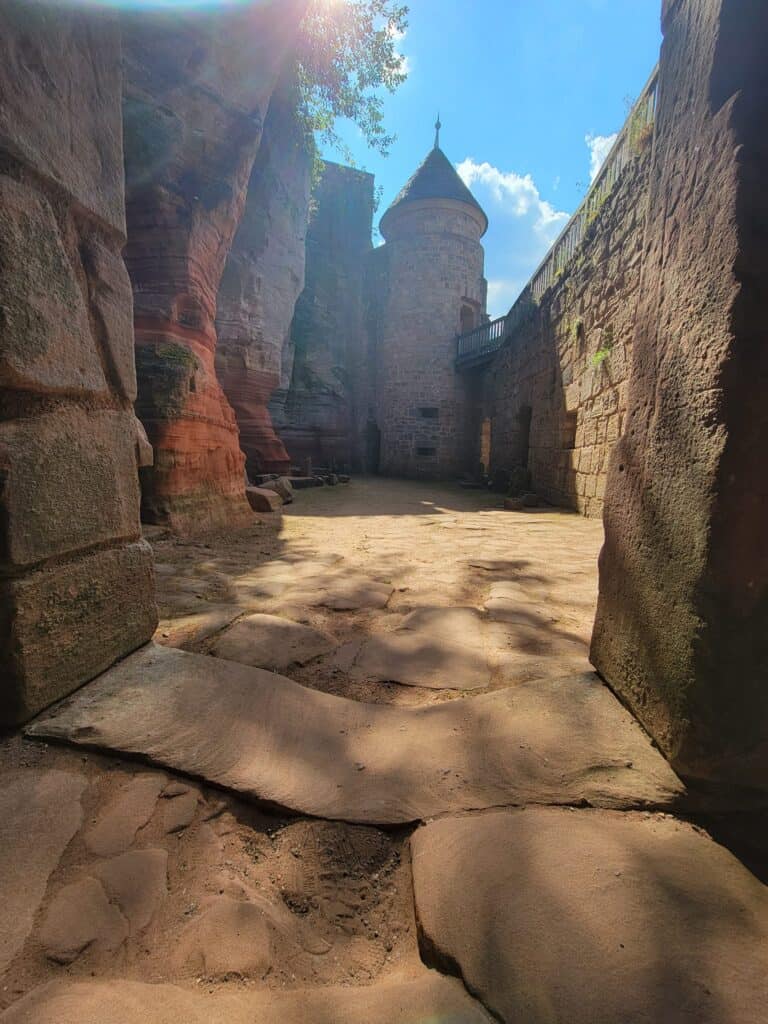
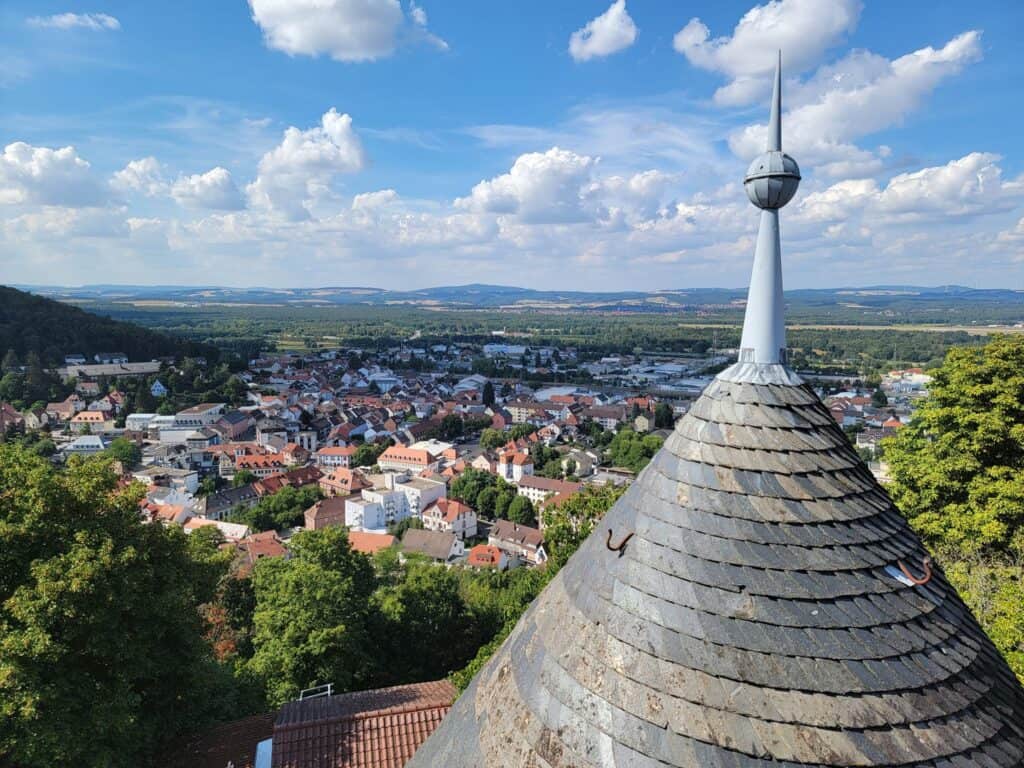
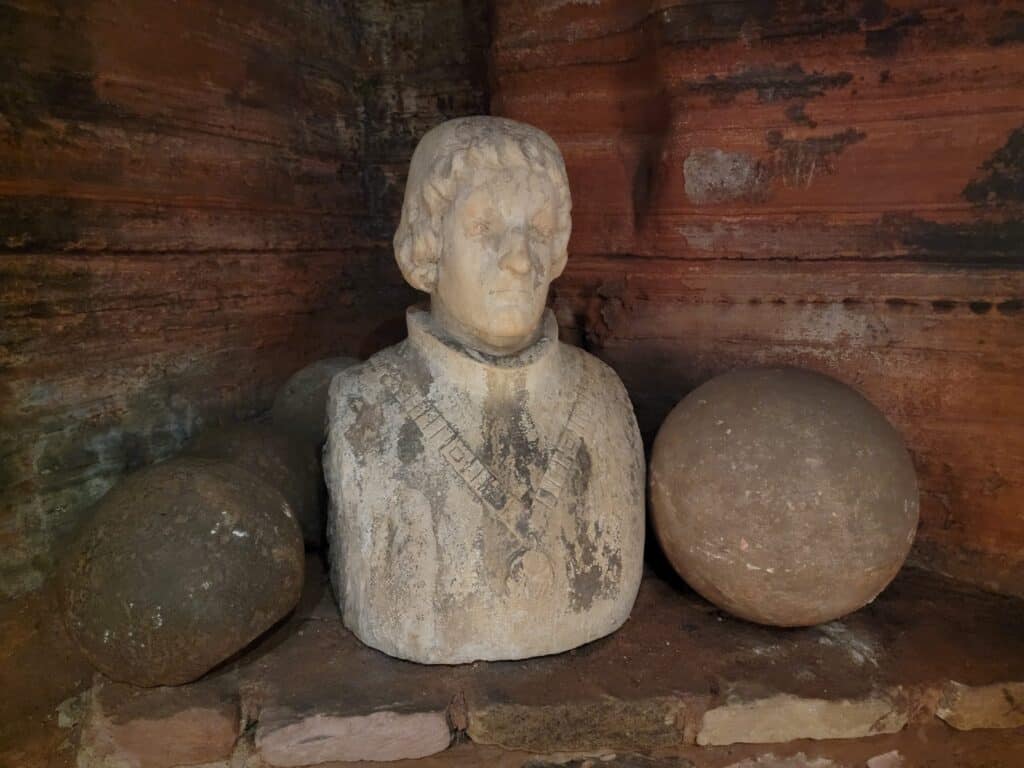
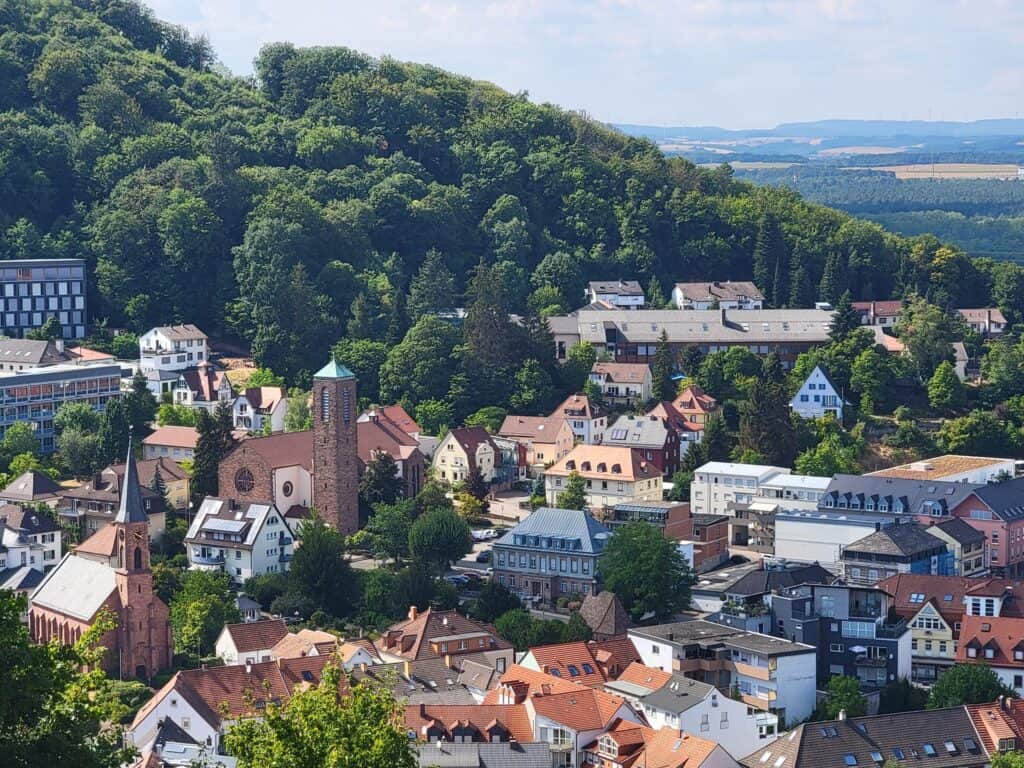
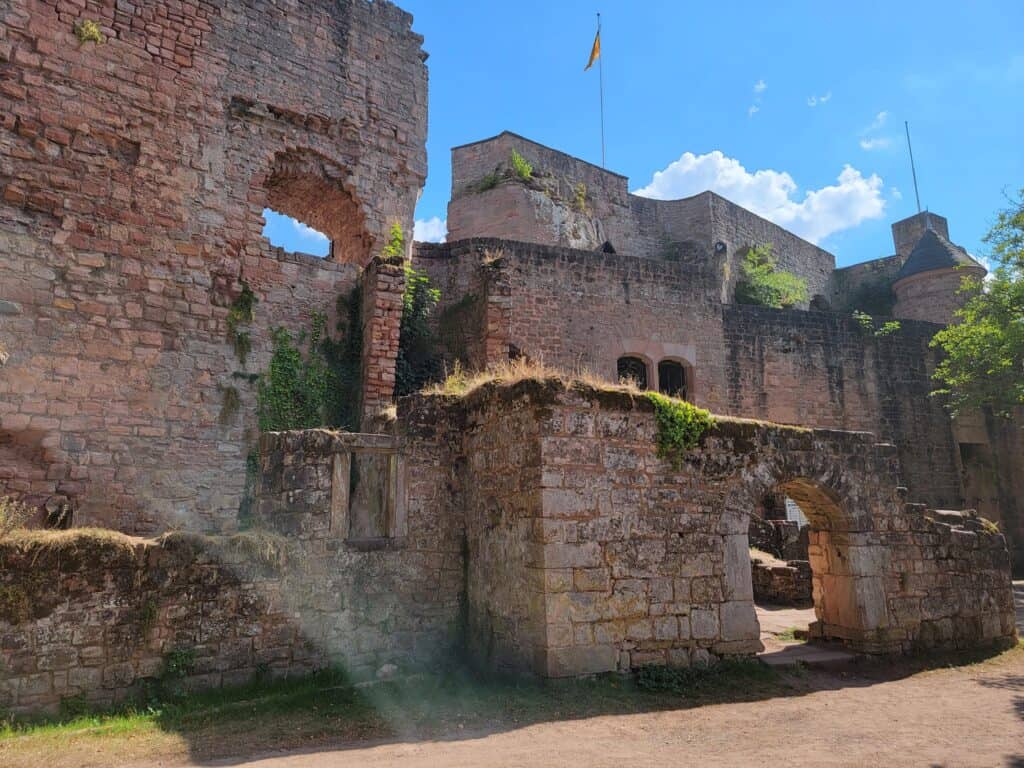
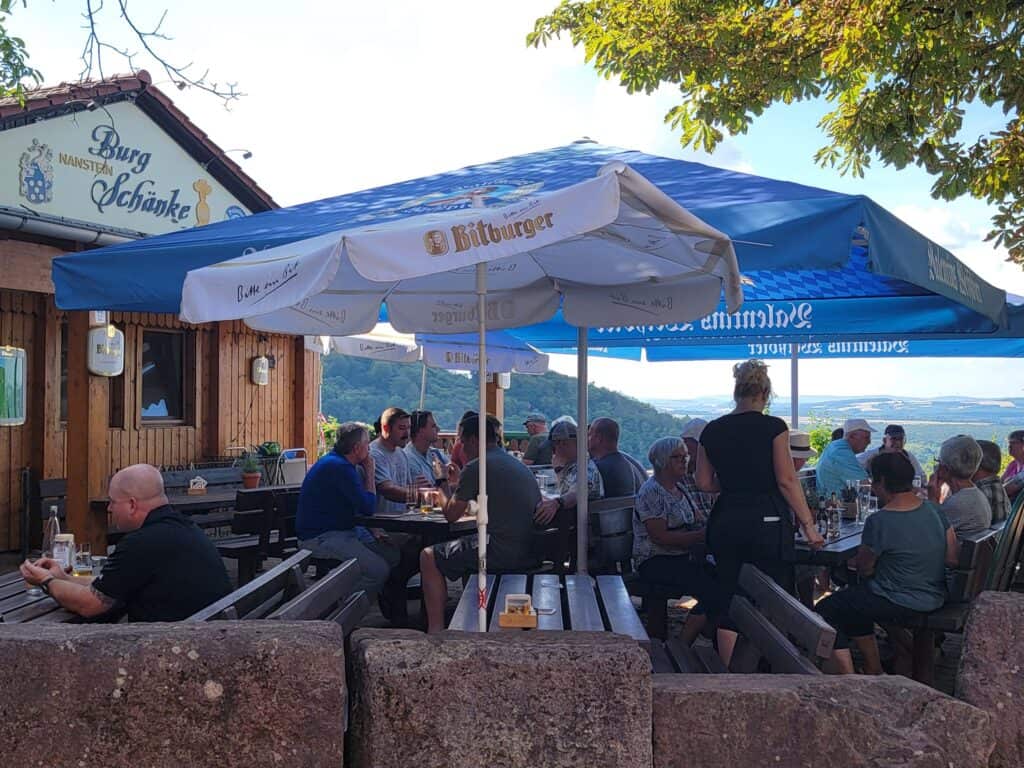
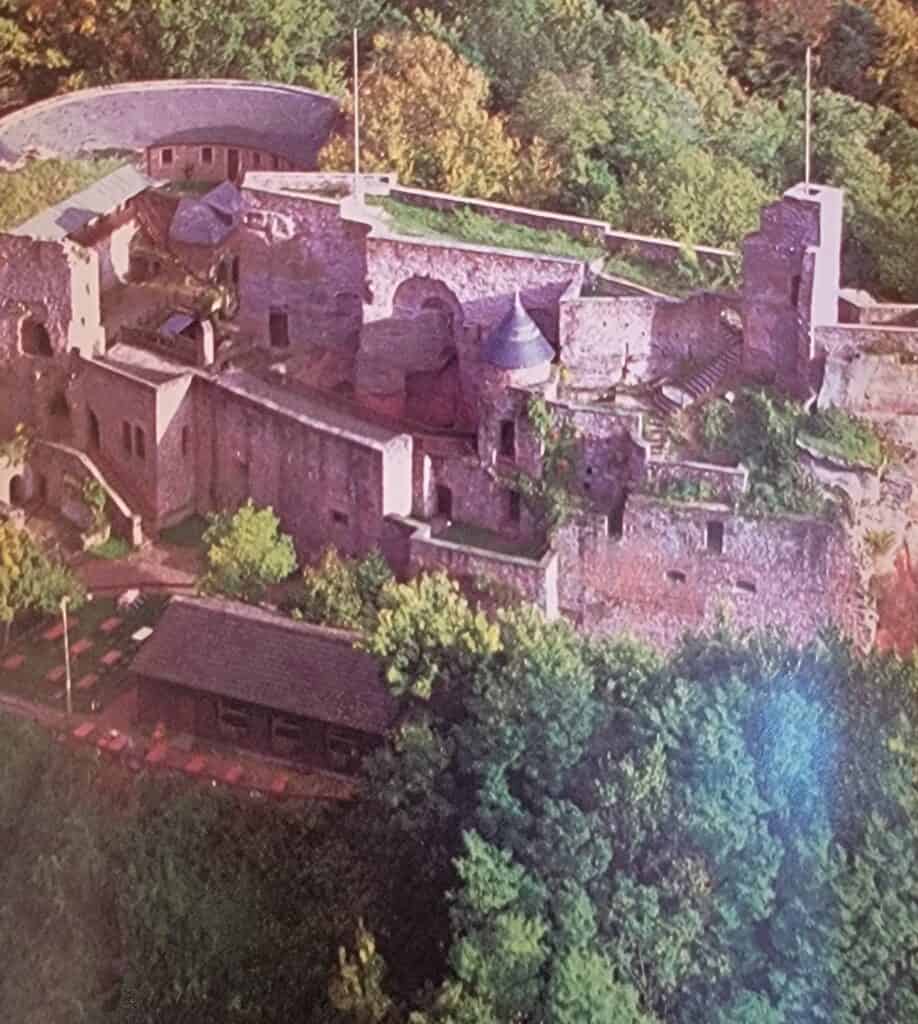
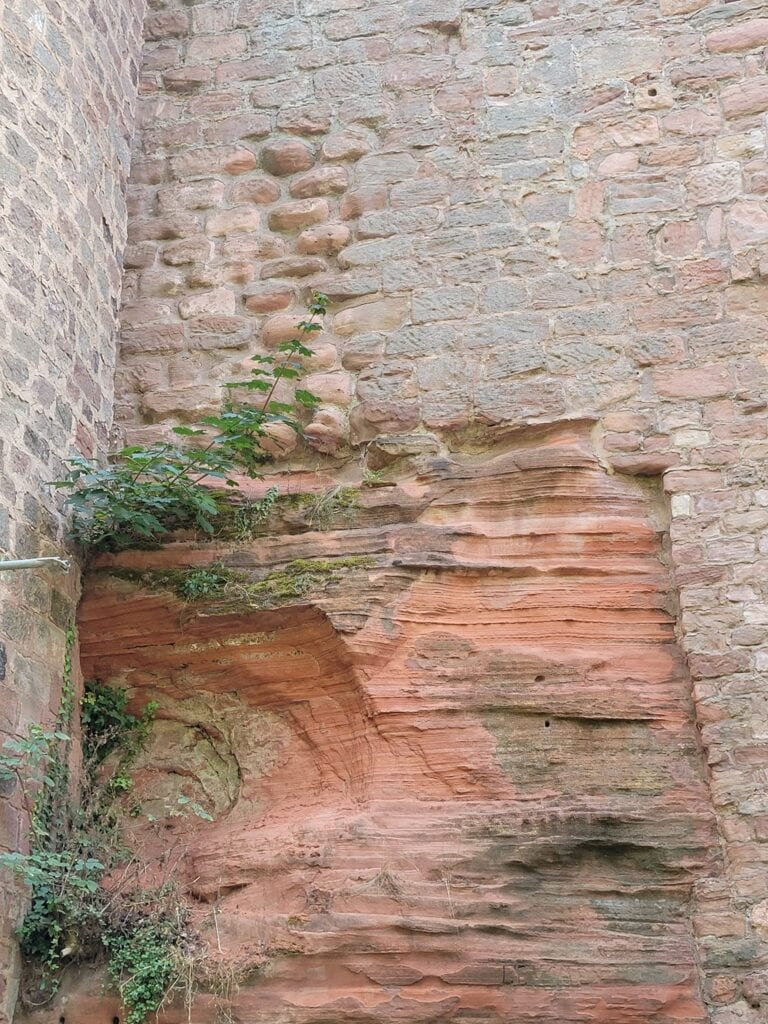
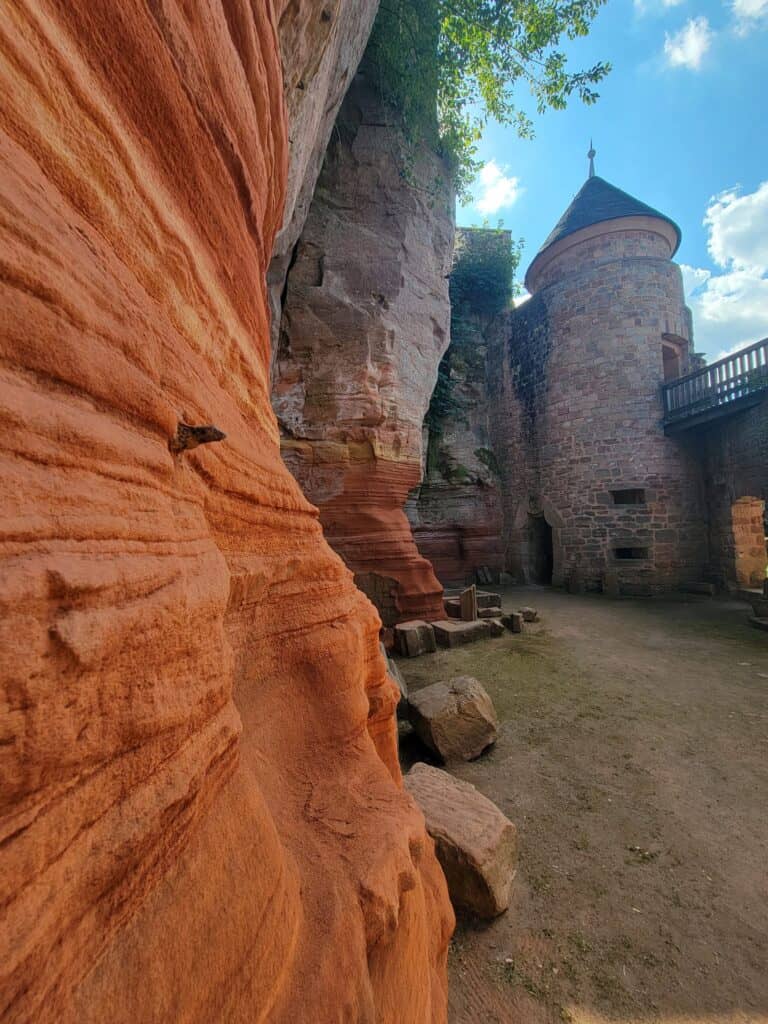
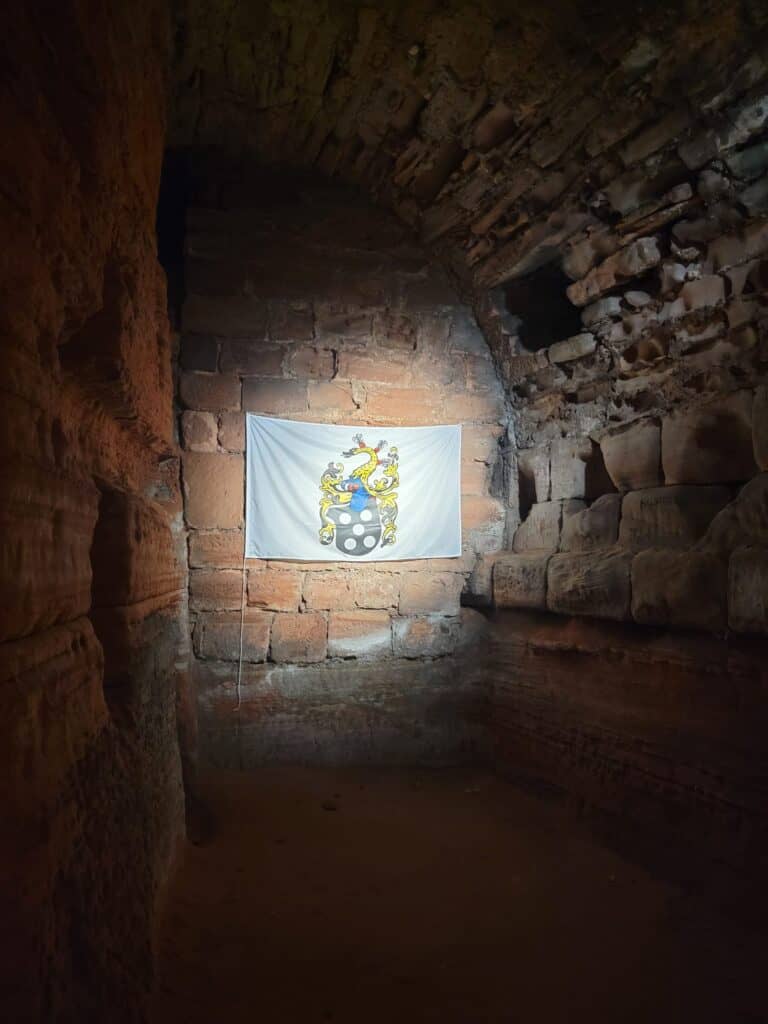
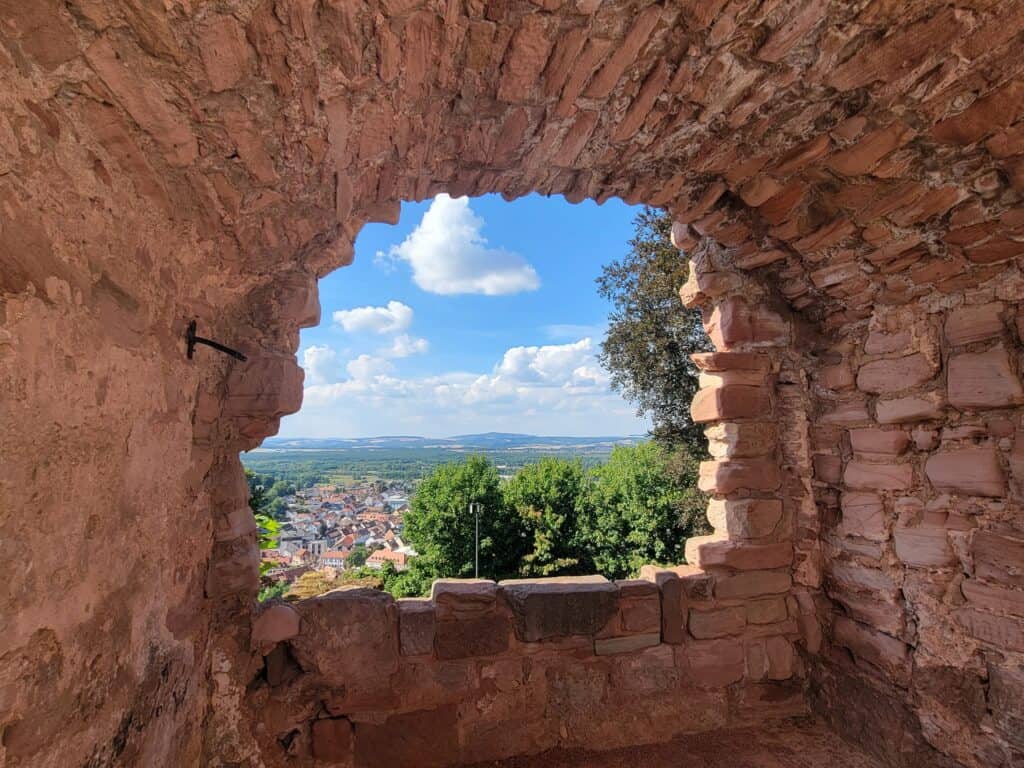

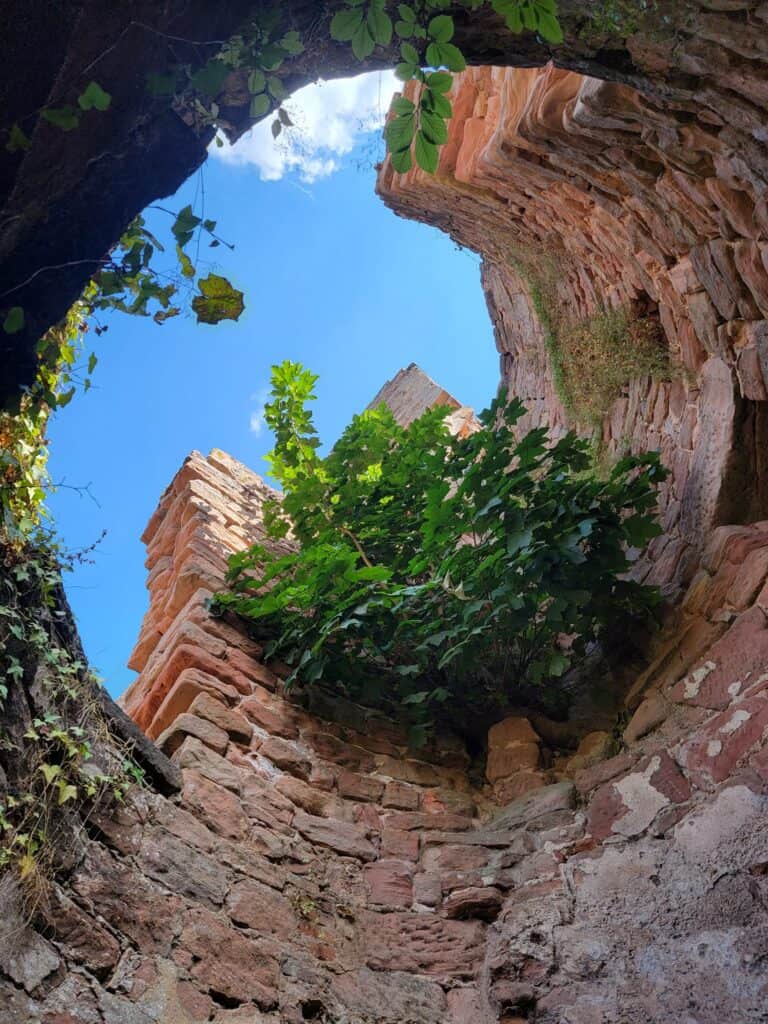
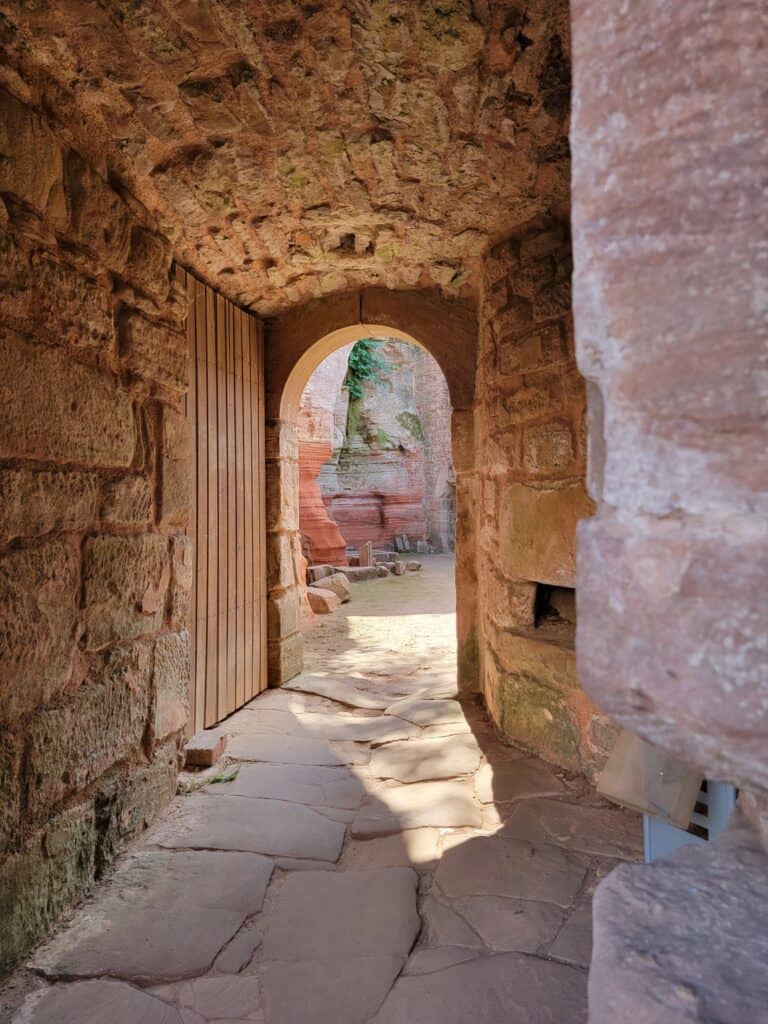
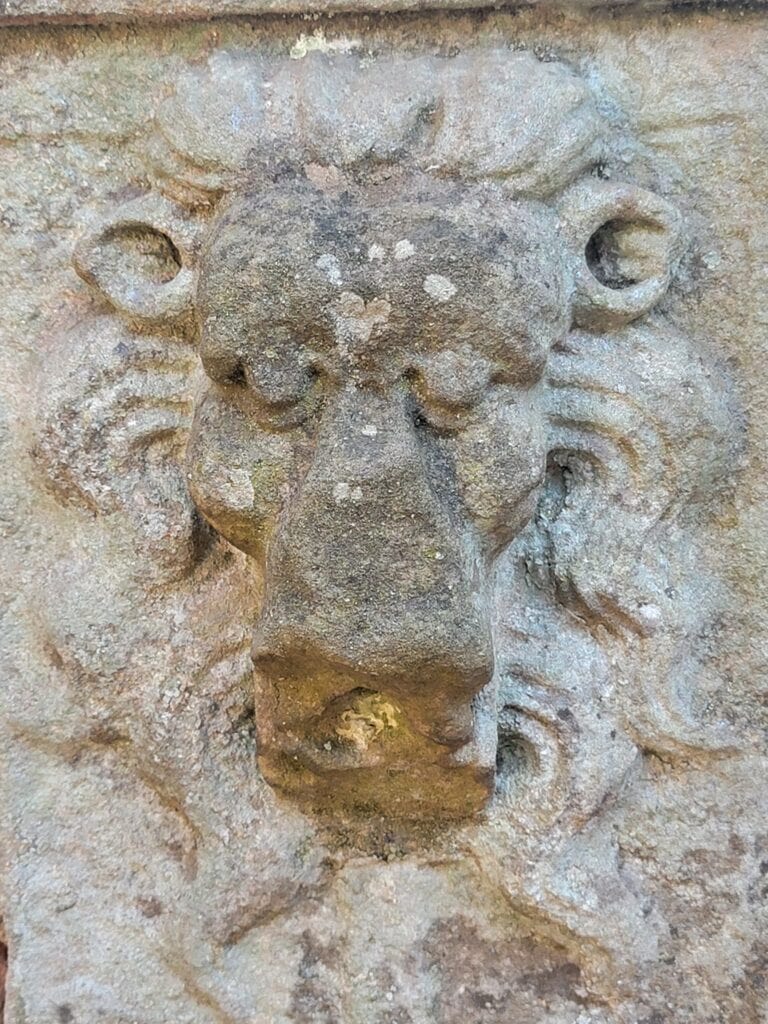
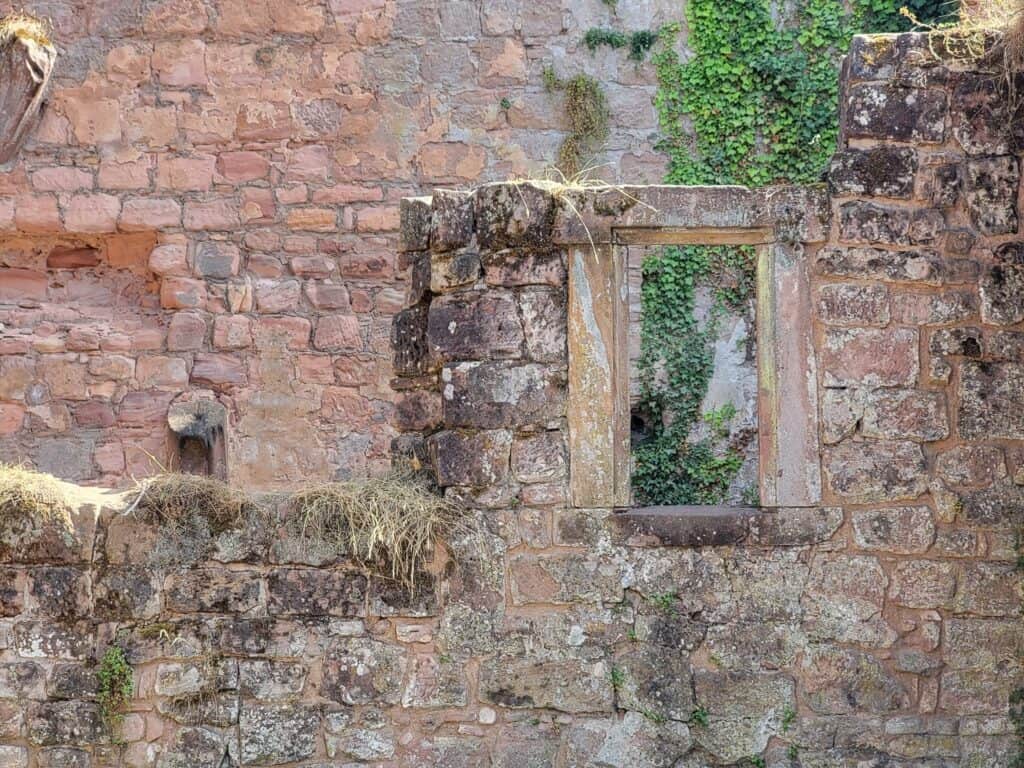
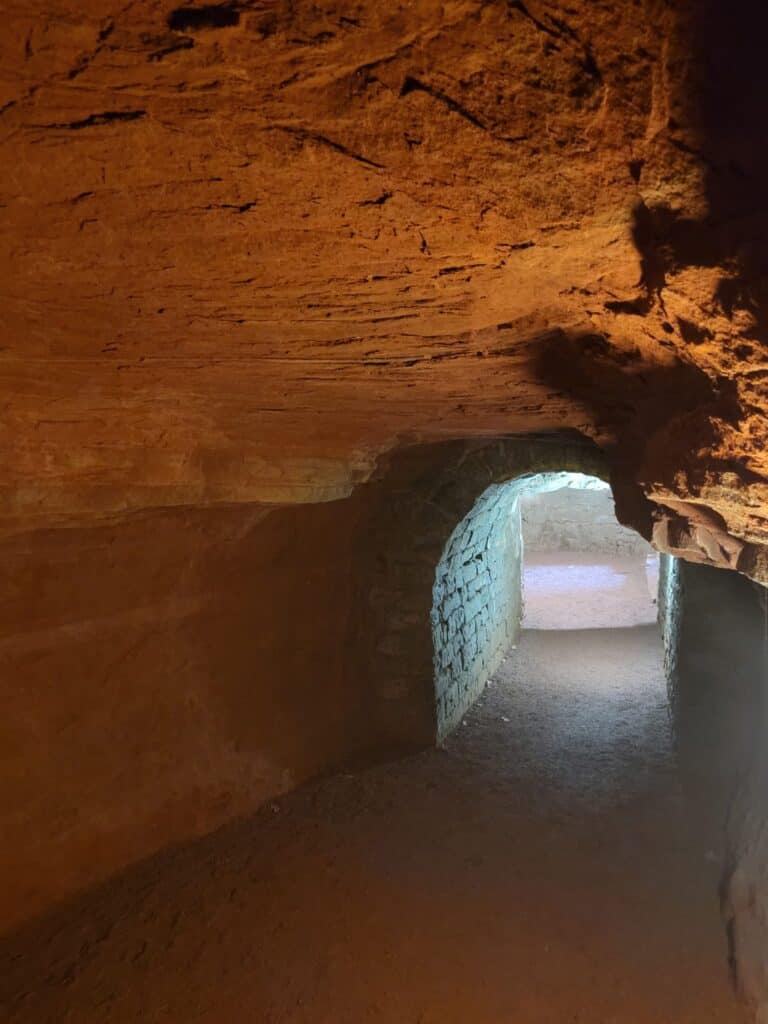
Things went well for Franz, until they didn’t. After an unsuccessful assault on Trier to the West [read my post on Trier here], he retreated to Nanstein. He quickly fortified the castle with sandstone walls that measured 12-15 feet thick!
The Downfall
One would think these fancy new walls could withstand a bunch of canon balls, but in the end, the Archbishop of Trier would have his revenge. Three days and 600 cannon balls later, the walls fell in a spectacular way, and Franz met his end right next to what today is the ticket booth. It marked one of the first uses of artillery in such a venture.
Turns out it wasn’t the sandstone that betrayed Franz, but the mortar. The counter-assault happened before the lime mortar could cure completely, and after enough battering, down it all crumbled. And down went Franz, one of the most notable figures of the Reformation – the last knight – under a pile of rubble.
After his death in 1523, his sons rebuilt the castle in the Renaissance style, but eventually the French came and tore most of it down. The borderlands of modern Germany and France battled continually, and the lines between the countries went back and forth many times.
Visiting Nanstein Castle
What luck that as much survived as it did, and I had time enough to enjoy the whole thing before my face started swelling up! That means give the castle about two hours, and then allow some time to hang out in the charming biergarten to enjoy some local brats and brew.
And definitely get the audioguide to learn the colorful stories and explanations of the various rooms that still remain in historic Nanstein Castle.
The castle closes Mondays, but is open Sundays when many shops and attractions are closed. From April – September, 9am-6pm and October – March 9-6. In December the castle closes during the school winter break so check before you go.
Admission is 4 euros, and 8 euros for a family pass with 2 adults and children.
Check out the Burg (Castle) Nanstein website for more information, and click here for the current weather in Landstuhl.
For other great castle afternoons in the area, check out my posts:
- 21 Best Things to Do in Kaiserslautern Germany
- 28 Best Day Trips from Kaiserslautern: Your Ultimate Guide
- Hike to Hohenecker Castle in Kaiserslautern
- Dinopark Kaiserslautern: Great Fun for Everyone at the Gartenschau
- Ultimate Guide to Frankenstein Castle in Frankenstein Germany
- Explore the Astounding Schlossberg Caves and Castle Ruins in Homburg
- Stahleck Castle in Bacharach: A Gorgeous Hike with a Dark Past
- Discover Charming Hohenbaden Castle Overlooking Baden-Baden
- A Real-Life Fairytale Castle in Germany – Discover Miraculous Burg Eltz
- Saarbrücken Castle – Explore This Fascinating Underground World
- Lowenburg Castle – The Remarkable Story of a Medieval Castle that Isn’t!
- Your Ultimate Guide to Visiting Nuremberg Castle: History, Tips & Must-Sees
To receive notifications when new content appears on The Adventure Lion, sign up below and join the pride!
